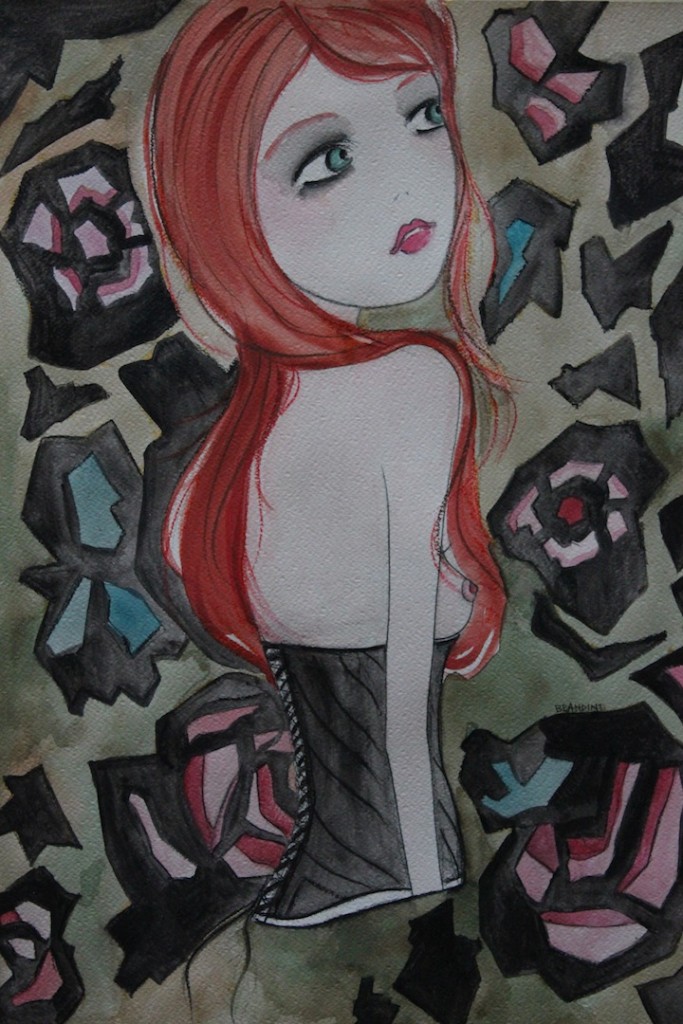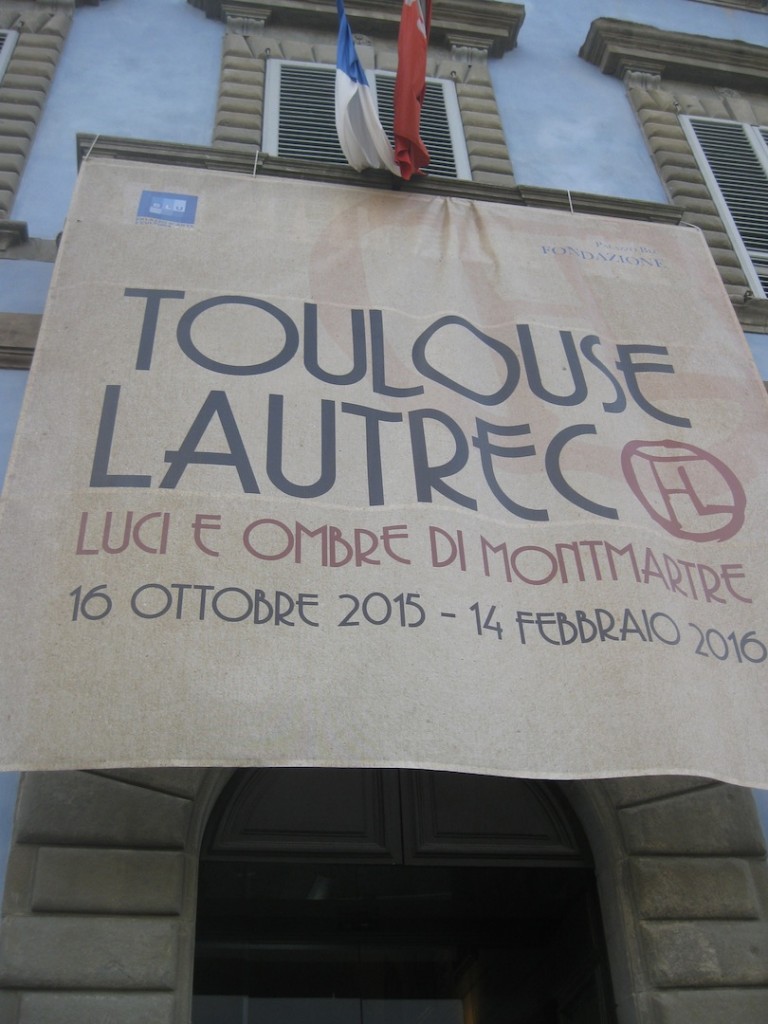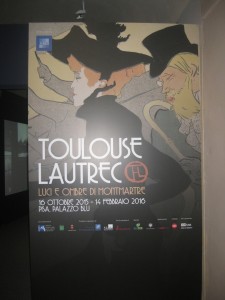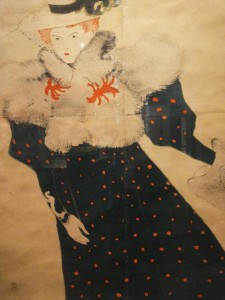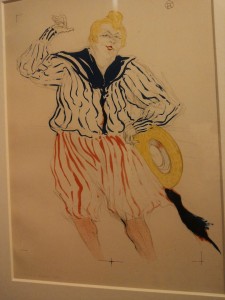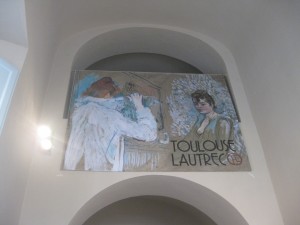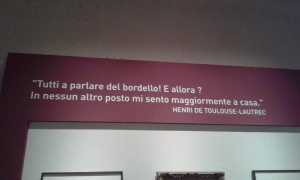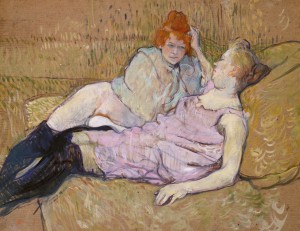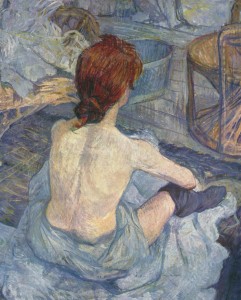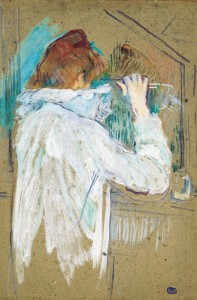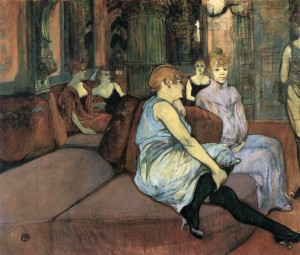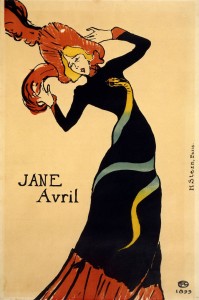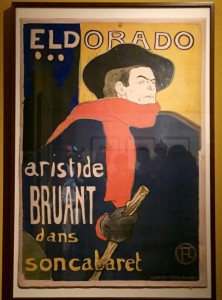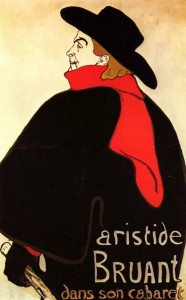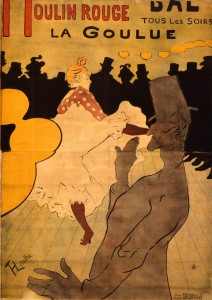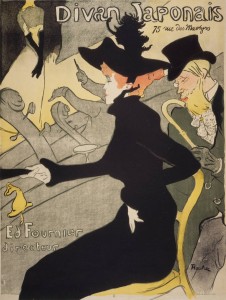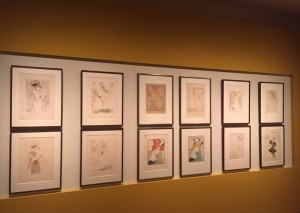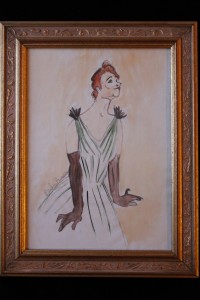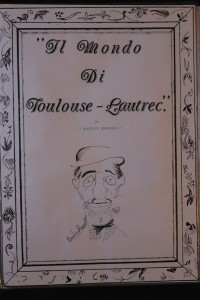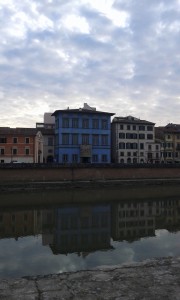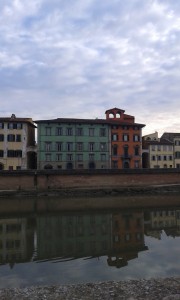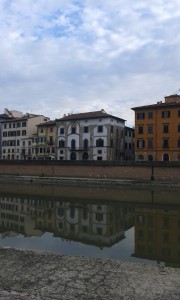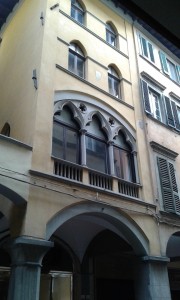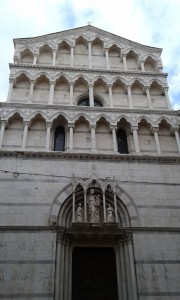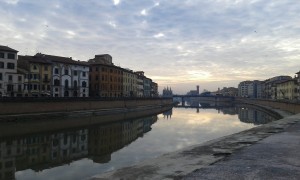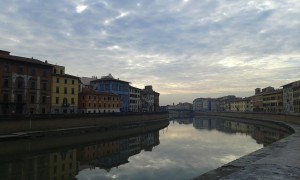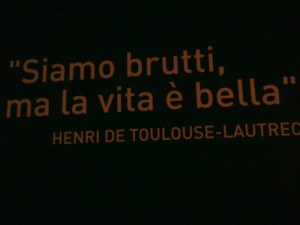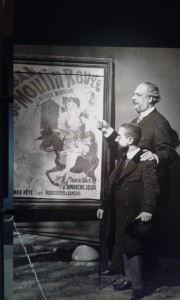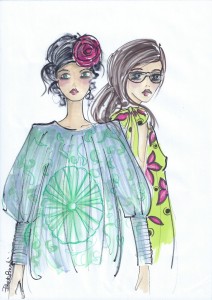“Déshabille” by Beatrice Brandini
Banner from the exhibition at Palazzo Blue
It is just concluded the beautiful exhibition “Toulouse Lautrec Montmartre lights and shadows”, at the charming Palazzo Blu (Pisa). The artist who was able, more than anyone else, to describe and represent a city, a neighborhood, a lifestyle … the Paris of the late nineteenth century.
Billboard of the exhibition Toulouse Lautrec lights and shadows of Montmartre
Lithographs by Henri de Toulouse-Lautrec in the exhibition at Palazzo Blu
The exhibition highlighted the French artist’s graphic work, with numerous lithographs of his unforgettable posters.
Lautrec was born from an old aristocratic family in the south of France, the well-off conditions and the privileged life to which he was destined soon are opposed to a cruel fate made of illnesses and accidents that compromise his life forever.
Deeply affected in body and spirit, Lautrec vents his condition and perhaps desperation, in the attendance of the Montmartre district, home to many local and small shops, restaurants, cafes, dance halls … magical places that attracted an extremely diverse clientele, characterized mainly by artists. Genes such as Degas, Renoir, Van Gogh … lived and had their own studio in Montmartre.
Inside the exhibition
But perhaps more than the others is in this neighborhood that Toulouse-Lautrec can happily to fit between nightclubs, brothels, cabarets …, no longer feels a “different” (his “deformity” is accepted), but rather this busy and noisy nightlife gives him terrific insights for his restless creativity.
“All talking about the brothel! So? In no other place I feel most at home.” Henri de Toulouse-Lautrec
Henri Toulouse-Lautrec “The sofa” (1894-96). The Metropolitan Museum of Art
Henri de Toulouse-Lautrec “la Toilette” (1896). Musée d’Orsay
Montmartre become the pivot around which all his art. The premises with the dancers, the diverse audience, prostitutes and all that mass of human derelicts, lonely men, alcoholics, the poor .., become the main themes of his work.
Henri de Toulouse-Lautrec “Femme se frisant”. Tolosa, Musée des Augustins
“Our age is no less rich in sublime themes than the previous one …. The spectacle of fashionable life and the thousands of beings, criminals and maintained, floating adrift in the slums of a big city …. we do only to open your eyes. “ Baudelaire, in 1846.
Henri de Toulouse-Lautrec “At the Salon in the Rue des Moulins” (1894). Albi, Musée Toulouse-Lautrec
Lautrec was a magnificent “portrait” since his main interest was directed to the character and his “human personality.” The individual in its uniqueness. Hence her disinterest in the background or to the landscape (expensive, however, to Impressionist painting), understood and used only as a frame.
The importance of Lautrec is also linked to the history of fashion since his work has a documentary value; no one like him has in fact been able to trace the happy and carefree time christened the Belle Epoque, but also by representing the shadows and anxieties.
Henri de Toulouse-Lautrec “Jane Avril” (1899), lithography
Lithographie de Henri de Toulouse-Lautrec “Aristide Bruant” (1892)
Lithography by Henri de Toulouse-Lautrec’s “Moulin Rouge, la Goulue” (1891)
However the most important thing that made Lautrec the artist that we all know and love, was the collaboration with newspapers and magazines for which he realized posters, anticipating the modern shape of the graph and giving this profession, dignity and authority. His expressive language upsets that of the past, it is thanks to Toulouse-Lautrec if the graphics were subtracted from his destiny of art “minor.” With him we can safely claim to be the dawn of modern advertising, the ability to convey a message through an image.
Henri de Toulouse-Lautrec “Divan Japonais” (1892). Lithography
Wall of the exhibition at Palazzo Blu
“The world of Toulouse-Lautrec”, Thesis by Beatrice Brandini, (1991)
I loved Lautrec since little girl (as witnessed by my thesis in art history when I was studying fashion …), because unlike the other Impressionists have always found true, spontaneous, less academic, more authentic. Even when he portrayed the prostitutes (some of his work more intense), there was no voyeurism, or complacency, no will to curry favor an audience of amateurs like that … it would be much simpler … His nudes were the result of a sensitive soul and sad, his women were brutalized by the life of the brothel, of loneliness, boredom, routine … with the knowledge that their fate would never change.
Palazzo Blu seen along the Arno
…walking along the Arno in Pisa …
Glimpses of Pisa
Pisa along the Arno
Here Lautrec was a pure artist who wanted not to please anyone, who has always paid for his personal vision of art and the world. Unfortunately he never knew (and believed) to be the one who, together with a few others, would have created the art of our century foundations.
“We are ugly, but life is beautiful.” Henri de Toulouse-Lautrec
Henri de Toulouse-Lautrec with the director of Moulin Rouge
Modern Belle Epoque by Beatrice Brandini
Good life to all!
Beatrice


